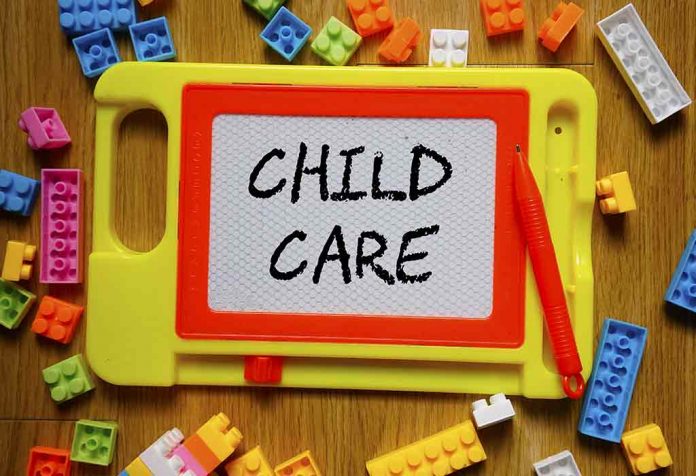

 28-Mar-2024 02:32:03 PM
28-Mar-2024 02:32:03 PM
<h2>List of Labour and Childbirth Complications</h2> <p>Serious concerns during labour and childbirth are now fairly rare. Advances in technology and science have helped doctors anticipate issues in advance giving them the chance to come up with a solution beforehand. However, there are some labour and delivery complications that can happen unexpectedly and require immediate attention.</p> <p>Advertisements</p> <p> </p> <h3>1. Labour That Does Not Progress</h3> <p>Labour that lasts for an unusually long time is said to have failed to progress. When it is a first-time mother, this phrase is used to describe labour that has gone on for over 20 hours, and in those who have given birth previously this time frame comes down to 14 hours. The causes of prolonged labour include:</p> <ul> <li>Very slow cervical dilation</li> <li>A big baby</li> <li>Multiple babies</li> <li>A small birth canal or pelvis</li> <li>Pain medications that weaken uterine contractions</li> </ul> <p>The doctor might suggest walking, sleeping, bathing, other relaxation techniques and changes in position to encourage labour, depending on the stage you are at.</p> <h3>2. Foetal Distress</h3> <p>When the foetus appears to be having some difficulty while in the womb, it is termed as foetal distress. This can range from a lack of oxygen to low levels of amniotic fluid and abnormal heart rate. When this happens, you may be asked to change position, increase hydration, or be given a transfusion of fluid into the amniotic cavity. In some cases, a C-section may have to be performed.</p> <h3>3. Umbilical Cord Compression</h3> <p>At times, the umbilical cord may be wrapped around the baby’s neck or be tangled in some manner. When this happens, the cord may get compressed, which causes a decrease in the blood flow to the baby leading to a dip in heart rate. If the dip is temporary or there is no compression of the cord, then a normal birth will follow. But if that is not the case, a C-section may have to be performed to hasten delivery and ensure the well-being of the baby.</p> <h3>4. Umbilical Cord Prolapse</h3> <p>In this condition, the umbilical cord slips through the cervix after your water breaks but before the baby enters the birth canal. You might be able to feel the cord in the birth canal or it might protrude from the vagina. This calls for immediate attention because the flow of blood through the cord might get stopped leading to foetal distress.</p> <h3>5. Abnormal Position</h3> <p>The best position for delivery is when the baby is facing downward and is head first. One of the common complications of labour<strong> </strong>and delivery occurs when the baby is in some position other than this, making a vaginal delivery difficult. The baby might be in a breech position where the buttocks or feet come first and some babies might also be lying horizontally instead of vertically. The doctor might be able to change the baby’s position manually or use forceps to facilitate delivery. An episiotomy or C-section might be necessary in some cases.</p> <h3>6. Shoulder Dystocia</h3> <p>Here, the baby’s head gets delivered vaginally, but the shoulders remain stuck. When this happens, the doctors might try to get the baby unstuck through different manoeuvres such as applying pressure to the abdomen, turning the baby manually, or conducting an episiotomy to allow for the shoulders to slip out. Any complications caused by shoulder dystocia are usually temporary or treatable, but there is always the risk of significant injury to both mother and child.</p> <h3>7. Amniotic Fluid Embolism</h3> <p>Considered a serious complication, this occurs when a small amount of amniotic fluid enters your bloodstream and travels to the lungs causing the arteries there to close up. This can result in increased heart rate, cardiac arrest, and even death. Widespread blood clotting is another problem that may arise. This condition is seen in labour that has been extremely difficult, or during a C-section, and requires emergency care.</p> <h3>8. Perineal Laceration</h3> <p>A Perineal Laceration is a tear in the perineum, or the area between the vagina and the anus, and usually happens during first time deliveries. The tear can be classified in various degrees from one to four. A first-degree tear is considered minor and might not even require any stitches. Having a large baby increases the risk of such tears. Perineal massages in the last month of pregnancy can help lower the possibility of this happening.</p> <h3>9. Rapid Labour</h3> <p>Usually, labour lasts for somewhere between 6 to 18 hours. But it is termed ‘rapid labour’ when it lasts for only 3 to 5 hours. This is characterised by quick, intense contractions that give you no time to rest. When this happens, there is greater risk of vaginal tears and haemorrhage. There is also greater chance of the baby aspirating amniotic fluid.</p> <h3>10. Uterine Rupture</h3> <p>If you have had a C-section previously, there is a chance that the caesarean scar might tear open during labour. This can lead to oxygen deprivation in the baby. Vaginal bleeding, irregular contractions, and abnormal heart rate of the baby are indicators of a rupture. An immediate C-section is the solution when this happens.</p> <p>These are a few of the possible complications that can arise during labour and delivery even if you have had a normal pregnancy. Knowing the issues is half the battle won and will help you deal with any emergencies.</p> <p><strong>Disclaimer:</strong> This information is not intended as a substitute for medical advice from a qualified professional.</p>

Cloth Diapers Versus Disposable Diapers – Which One You Need to Choose?

Second Baby Pregnancy – Know the Signs and Symptoms

24 Months Old Baby Food – Ideas, Chart, and Recipes

Measles(Rubeola) in Children

Best Options for After-School Child Care

Impact of Television (TV) on Children – Positive & Negative Effects